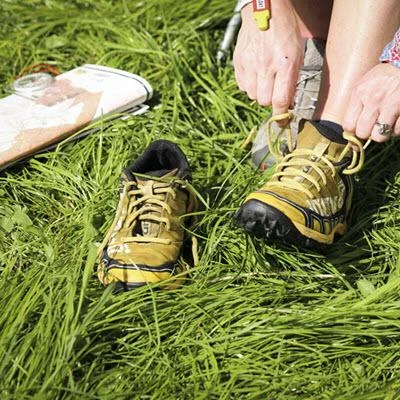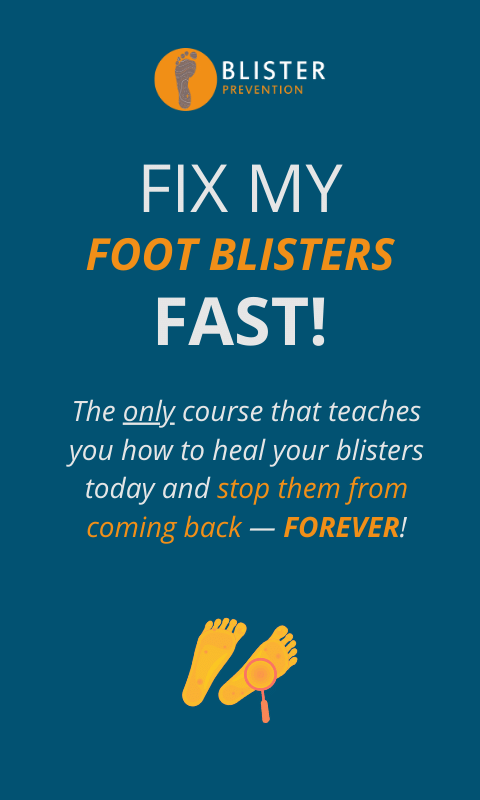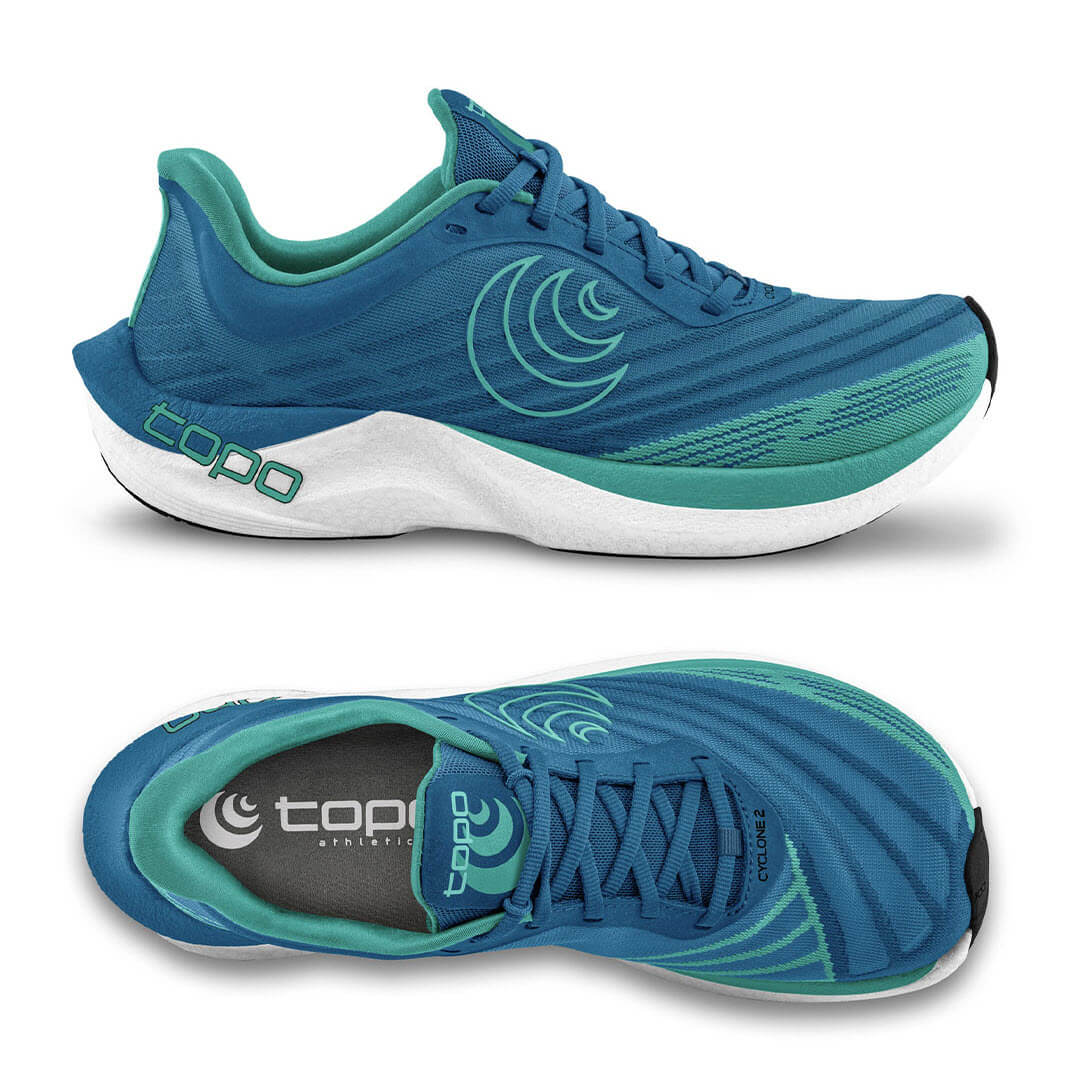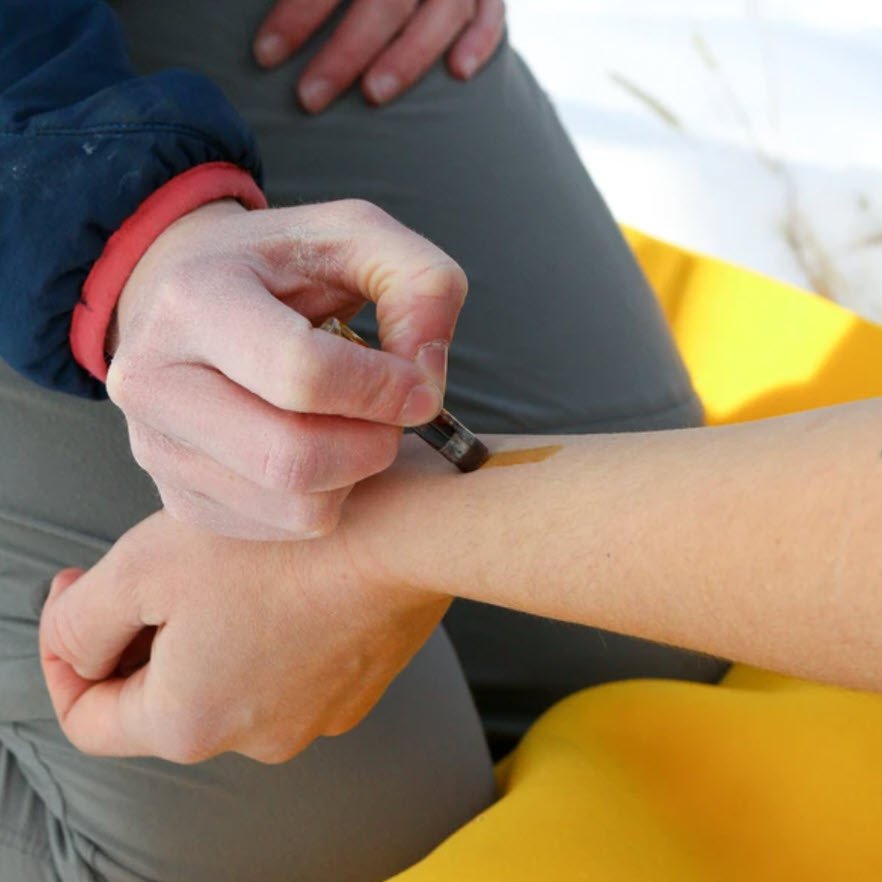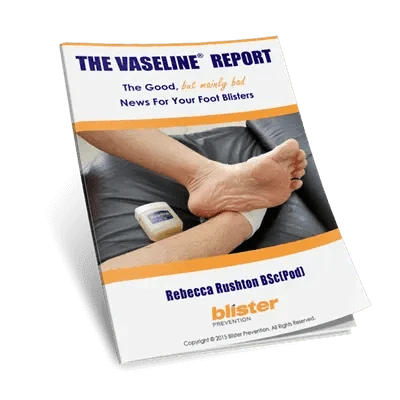This one piece of off-the-cuff blister advice REALLY grinds my gears.
Especially when they can’t tell you exactly what is wrong with your shoes to be causing the blisters.
What is it about these shoes that is causing my blisters?
Has this well-intentioned advice-giver even looked at your shoes? Or your feet? Where your blister is? Or what your blister looks like?
If you get this blister advice from someone, ask...
What is it about these shoes that’s causing my blisters?
Ask them to be specific. Is it because they're too:
- Big
- Small
- Narrow
- Wide
- Old
- New
- Stiff
- Flexible
Or is it the:
- Wrong stitching
- Bad upper material
- Wrong tread
- Heel pitch
- Insole
- Laces
- Lacing technique
- Wrong colour???
But seriously, without looking at your shoes, feet or blister, how can anyone tell with any certainty what the issue is.How do you know what features to avoid, and who’s to say the next pair won’t have the same problem?
Identifying shoe-related blister causes
Obviously, there are times when shoes can cause blisters. Consider the following scenarios.
Shoes causing blisters on back of heels
New shoes causing blisters on back of the heel are not uncommon. In some shoes, the sole is stiffer when they're brand new, so they don't flex as readily. As your foot progresses towards propulsion, the heel lifts and we rely on some flex in the midsole (or a rocker mechanism), plus a firm lacing technique, for the back of the shoe to lift too. Without it, there is more movement between your foot and the shoe. This repetitive relative motion can also create holes in the shoe lining. The more you walk in the shoes, the easier they flex at the forefoot, resulting in less movement mismatch.
One scenario of running shoes causing blisters on back of heel that I saw recently was a runner who went from a minimalist flexible shoe, into a full-length carbon fibre plate shoe. Obviously, the plate won't flex (or won't flex much). The heel was lifting more at the back of the shoe, causing unwanted blisters. In these situations, be sure to use a firm lacing technique, like the lace-lock lacing technique.

Shoes causing blisters on toes
A narrower toe box compresses toes together and predisposes to interdigital blisters and even pinch blisters. The little toe will often cop the brunt of that compression with outer pinky toe blisters as the result.
The problem with shoes that are too narrow in the toe is that there's precious little room to add anything for relief, as Toesocks and gel toe protectors take up considerable space and can add to the problem. Therefore, Lubricants or blister wool would be good alternatives.
If you're struggling to find a shoe that has the width you need at the toes, or if you've noticed your shoes bare no resemblance to the shape of your toes, check out Altra and Topo brands, they're really generous in the toe box. To get a good appreciation of the extra room you get in the toe box, do the toe fit check as see it for yourself.
A shallower toe box means there is less room for structural issues like:
- Hammertoes and clawed toes - contributing to top of toe blisters
- Extensor substitution - also contributing to top of toe blisters
- Hyperextended interphalangeal joint of the big toe - contributing to blisters under the big toenail
- Thick toenails - also contributing to blisters under the toenails
You also need to consider the stiffness of the upper. Areas of decorative stitching or material changes means the upper won't conform to protruding joints. Increased pressure means increased friction force and likelihood of blisters. Although less common now, people wearing leather upper running shoes causing blisters on the toes will likely get relief with the more flexible breathable mesh uppers. However, this comes at the expense of water-proofing.
Shoes causing arch blisters
There's been a bit of chatter in recent years about shoes causing blisters under or along the arch. An example of this was the Hoka Clifton 6. This is often the result of the elasticated tongue gusset. These can be tricky to prevent and some runners choose to cut and remove the gusset altogether.
How To Stop New Shoes From Causing Blisters
Firstly, wear-in your new shoes gradually. Give your feet and your shoes a little time to get acquainted; to get used to one another. There are very few blister prevention strategies that have an evidence base, but familiarity with the footwear (ie: breaking-in your shoes) is one that we know helps. Getting new shoes and wearing them for the first time on race day is the antithesis of a good blister prevention choice. How long should this wearing-in process take? Not long. Some would say you shouldn't have to break shoes in at all. Whatever you do, don't put up with blisters. If you're relatively blister prone and need a prevention in place right from day one, that's absolutely fine.
For new shoes causing blisters, socks help too; or stockings/nylons if you're in a dress/court shoe. It's far better to have this additional layer between your skin and shoe in preventing blisters. This basic addition can be a lifesaver in preventing blisters from your new shoes for the first couple of wears.

Check the inside of your shoe for defects. It's unlikely, but check. If you're getting irritation on the bottom of your foot, take the insole out and have a look - make sure there's nothing under there that shouldn't be. As your shoe gets older, check the insole to see if the surface material has worn though, causing irritation; or if the insole is compressed and offering no cushioning at all. Replace them with some nice cushy 3mm Spenco insoles if the proprietary insoles aren't offering enough cushioning for your liking, right from the get-go if you need to.
You may be used to wearing a particular brand and style, and you've just got the new version update. Sometimes shoes literally don't change in any way from version to version. Sometimes they change A LOT! Like the Asics Gel Cumulus 24 to 25 and again to 26. So don't expect to just pull the next version on and expect it to be exactly the same. Do your research. Try the shoe on. And take a little time to get used to the shoe.
How To Stop Shoes From Causing Blisters
Choosing the right shoe to start with is vital. Consider length, width, depth and shape. It's not the whole story, but If it's too small and tight, you're really making it difficult for yourself.
However, if you've left no stone unturned in getting the best shoe for your foot, and you continue to suffer with blisters, research the best prevention for your blister's anatomical location. Don't just apply the same prevention to every blister and think that's the best you can do. Each area of your foot has its own set of factors that are relevant. So don't just search "what's the best blister prevention", search "what's the best blister prevention for... (here are some examples):
- Back of heel blisters
- Heel edge blisters
- Blisters under the heel
- Top of toe blisters
- Toe tip blisters
- Blisters under toenails
- Blisters between toes
- Pinch blisters
- Outer little toe blisters
- Blisters under the big toe
Blister Advice - Quick Wins
Having said that, if you're looking for my best off-the-cuff advice, if I could only access two products for blister prevention for the rest of my life, they would be Engo Blister Patches and Gel Toe Protectors. You'll go a long way with these two products for a large range of blister sites. That's just my opinion - you may have a different one. But read the links and find out why I value them so highly.
Shoes Causing Blisters?
There are situations where there is something specific about the shoe, or the new shoe situation, that causes foot blisters.
However, the reality is, shoes get the blame far too often.
My best blister advice is to think critically about your specific blister location.
In the next post, read about the fellow that drove 7 hours to see me about his blisters and how I had to burst his bubble.
